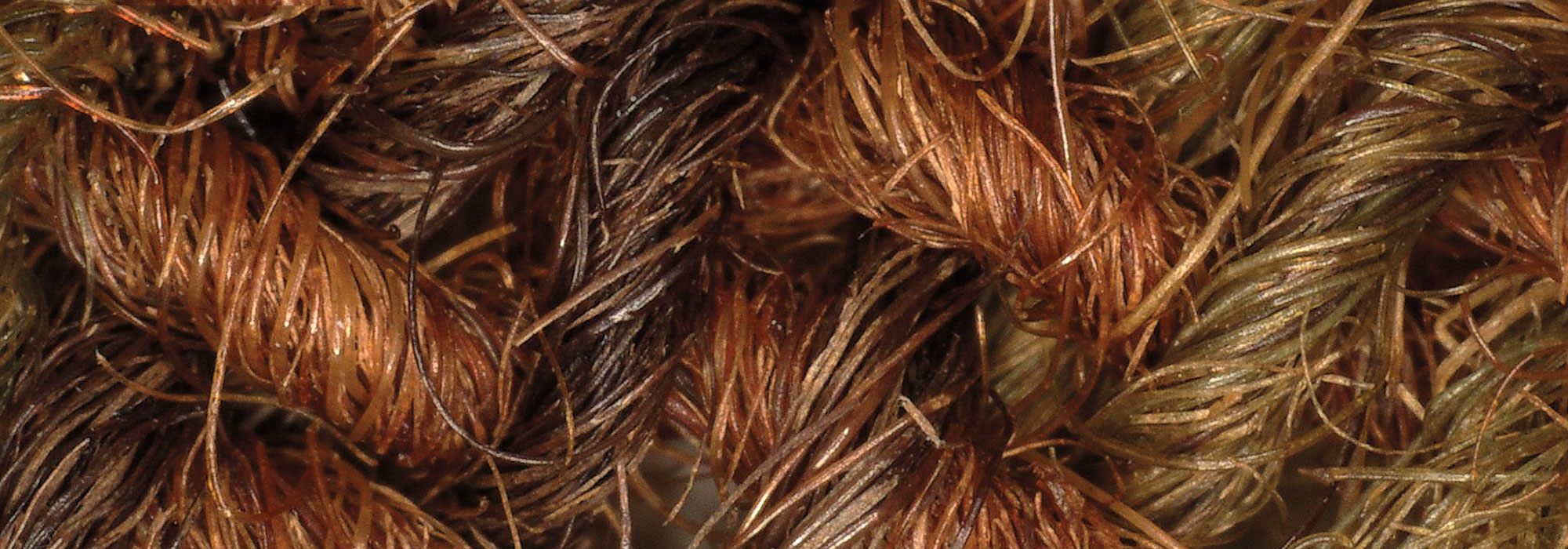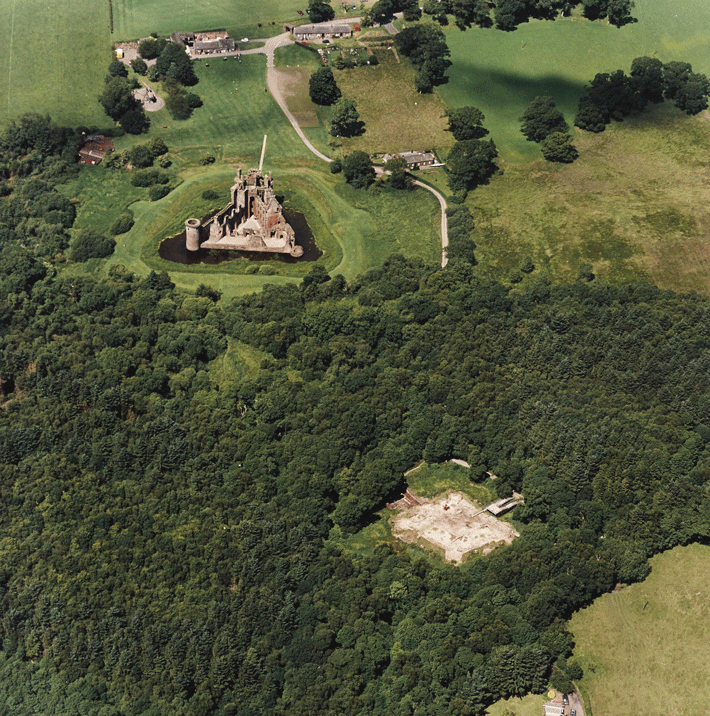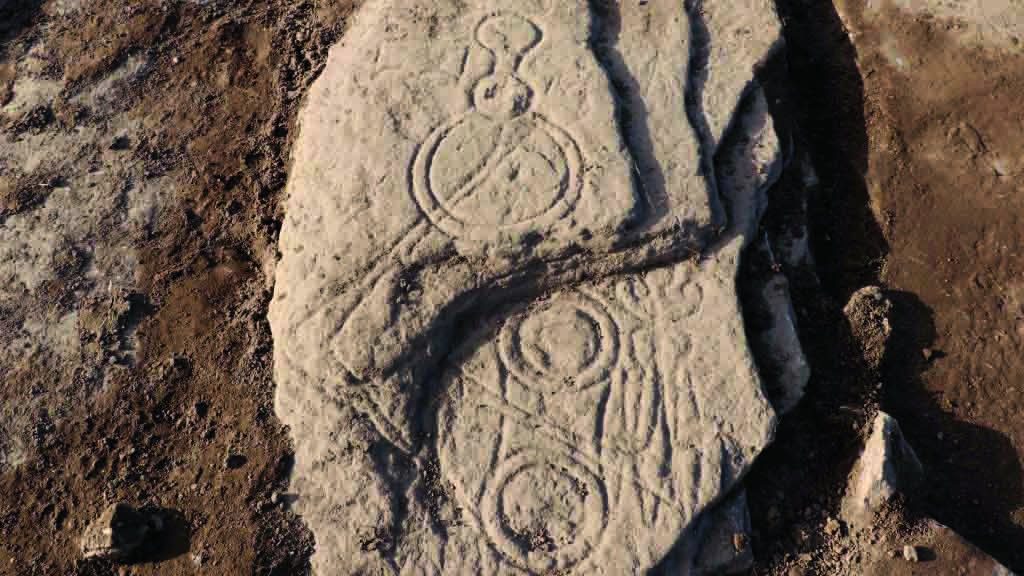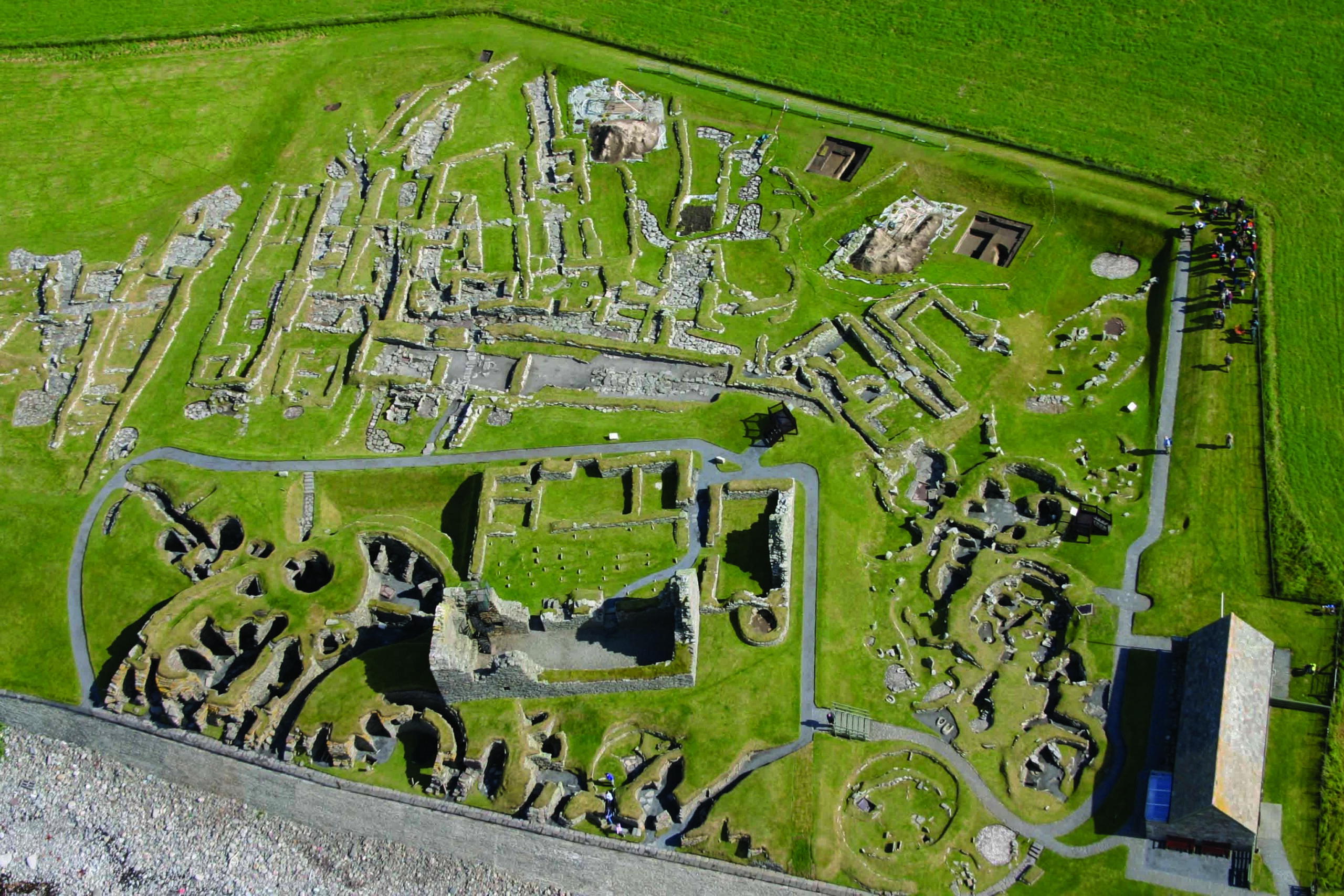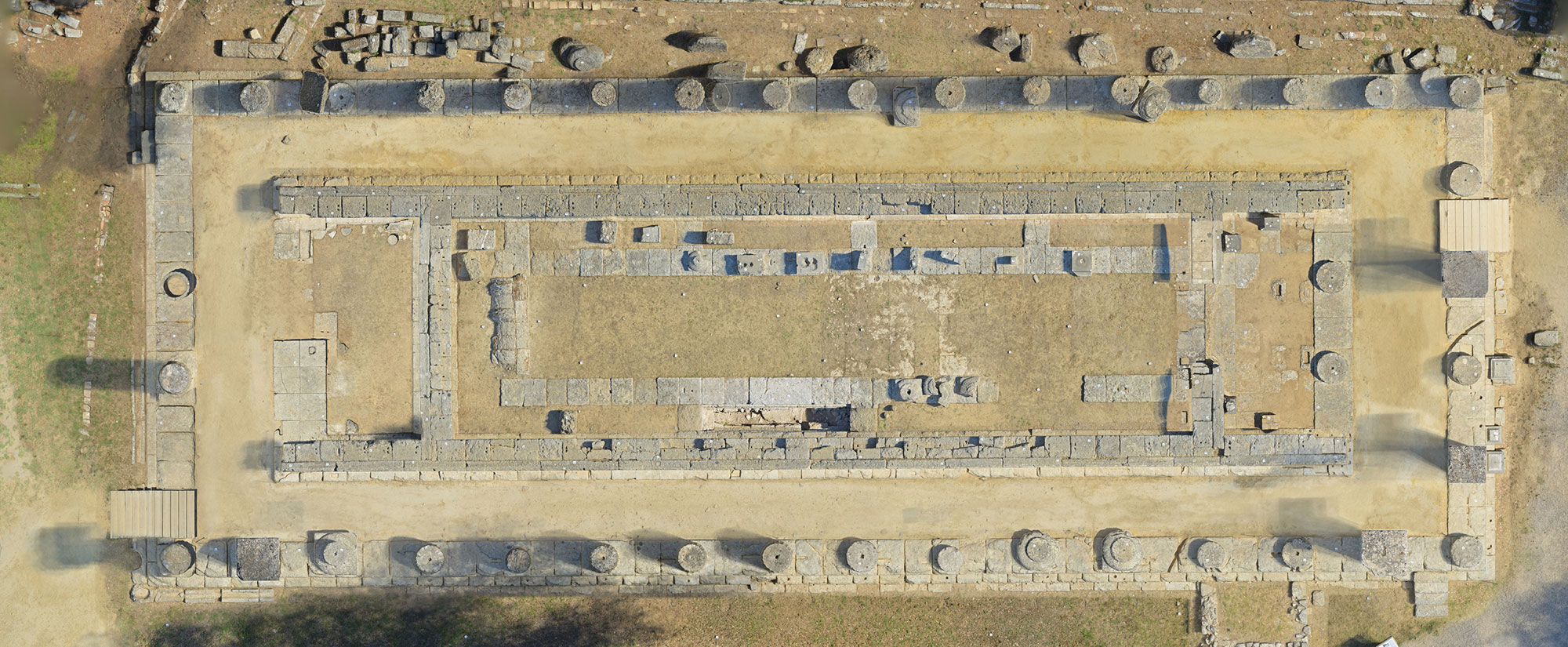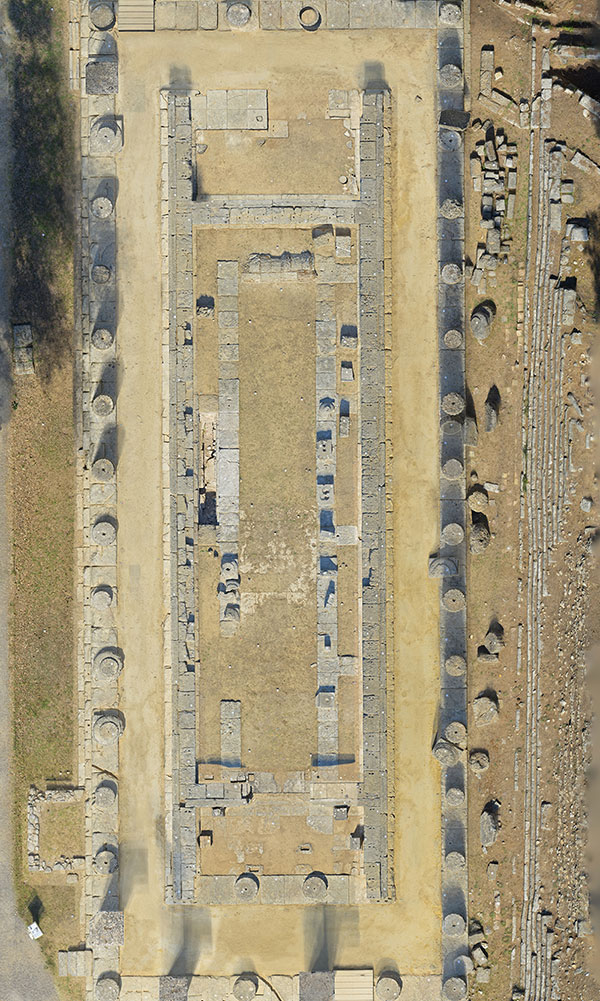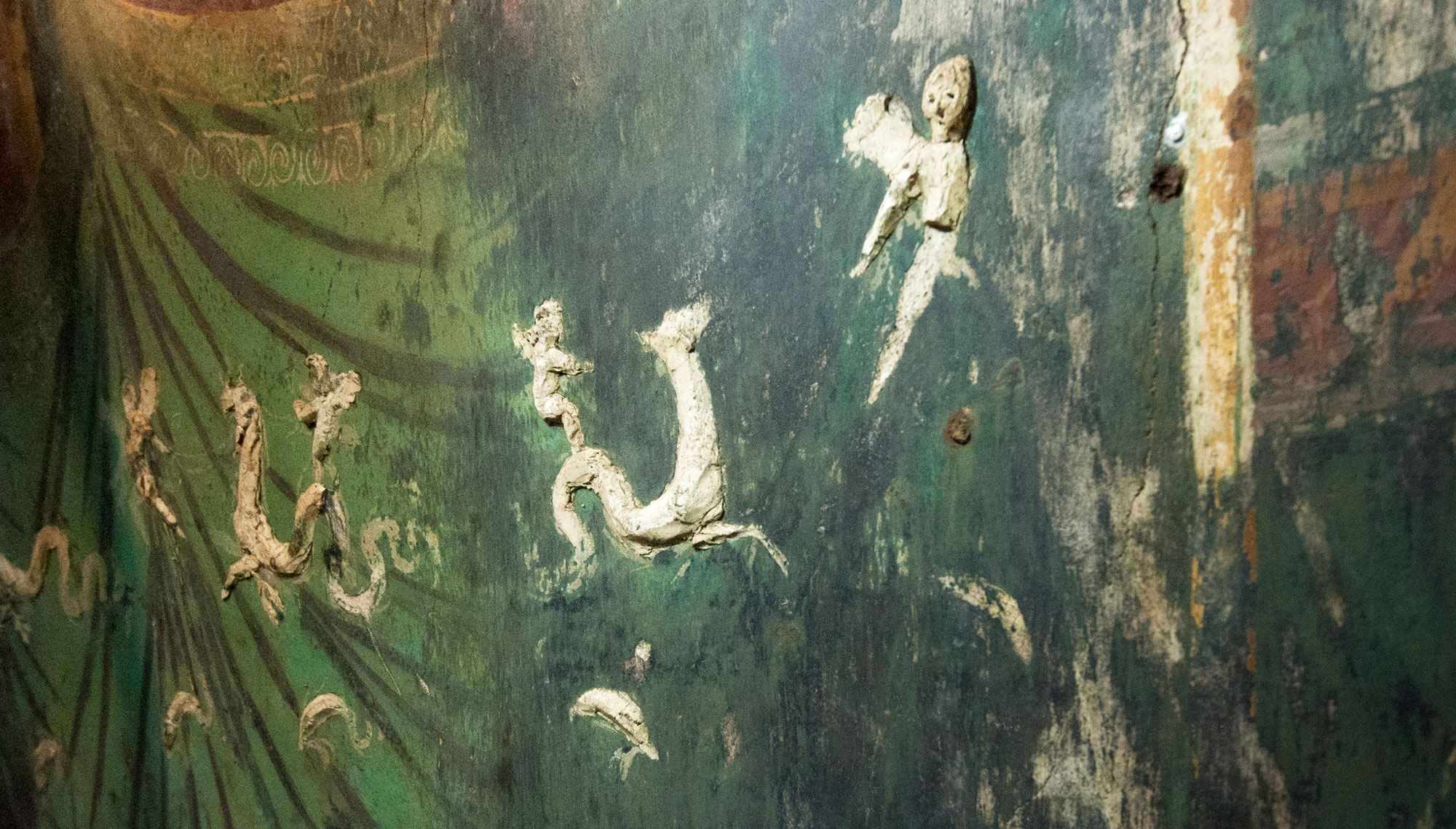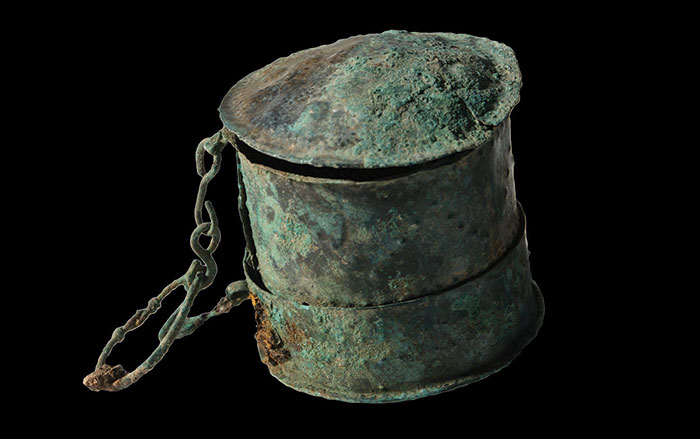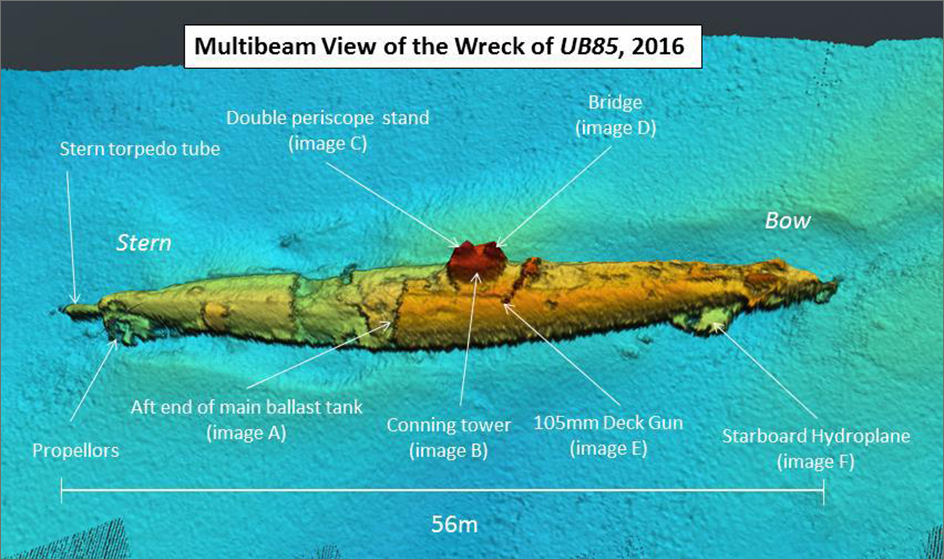
STRANRAER, SCOTLAND—BBC News reports that a German U–boat dating to the First World War was discovered off the coast of Scotland by a team laying subsea power cables. The vessel is thought to be UB-85, one of two UBIII-Class submarines known to have been lost in the Irish Sea. After being picked up by HM Drifter Coreopsis, the captain and crew of UB-85 claimed to have done battle with a sea monster that damaged the vessel so badly that it could no longer submerge. But nautical archaeologist Innes McCartney says that when the British ship approached the submarine on the surface at night, the crew of the German vessel may have tried to submerge quickly, started taking on water, and had to resurface and surrender. Identifying the newly discovered wreck with confidence may be impossible, however, as the UBIII-Class submarines were all very similar. “Unless a diver can find a shipyard stamp, we cannot say definitively, but yes, we’re certainly closer to solving the so-called mystery of UB-85 and the reason behind its sinking—whether common mechanical failure or something that is less easily explained,” McCartney said. To read about attempts to identify another recently discovered shipwreck, go to “Is it Esmeralda?”


